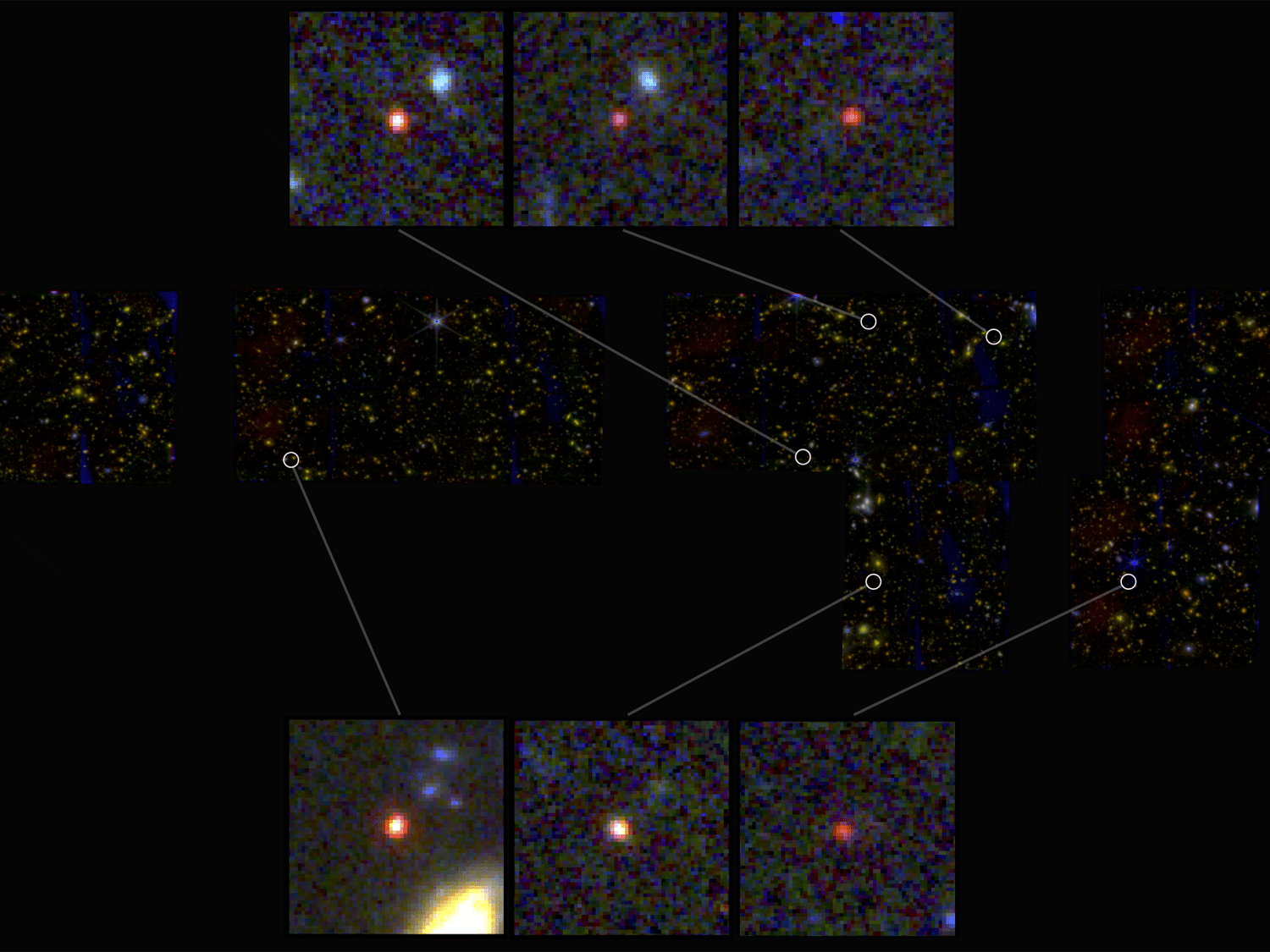One of the surprise findings with the James Webb Space Telescope is the discovery of massive galaxies in the early Universe. The expectations were that only young, small, baby galaxies would exist within the first billion years after the Big Bang. But some of the newly found galaxies appear to be as large and as mature as galaxies that we see today.
Three more of these “monster” galaxies have now been found, and they have a similar mass to our own Milky Way. These galaxies are forming stars nearly twice as efficiently as galaxies that were formed later on in the Universe. Although they’re still within standard theories of cosmology, researchers say they demonstrate how much needs to be learned about the early Universe.
‘‘Our findings are reshaping our understanding of galaxy formation in the early Universe,’’ said Dr. Mengyuan Xiao, lead author of the new study and postdoctoral researcher at the University of Geneva, in a press release.
The most widely accepted cosmological model is the Lambda Cold Dark Matter (LCDM) model which posits that the first galaxies in the Universe did not have enough time to become so massive and should have been more modestly sized.
The new findings, published in the journal Nature, were made using JWST’s spectroscopic capabilities at near-infrared wavelengths. This allows astronomers to systematically study galaxies in the very distant and early Universe, including these three massive and dust-obscured galaxies. The study was conducted as part of the telescope’s FRESCO program (First Reionization Epoch Spectroscopically Complete Observations), which uses JWST’s NIRCam/grism spectrograph to measure accurate distances and stellar masses of galaxies. The results may indicate that the formation of stars in the early Universe was far more efficient than previously thought, which does challenge existing galaxy formation models.
 The JWST NIRCAM operates over a wavelength range of 0.6 to 5 microns. Credit: NASA.
The JWST NIRCAM operates over a wavelength range of 0.6 to 5 microns. Credit: NASA. However, there has been some controversy as to whether these galaxies really are super-large and mature. In August, another study debated the earlier findings of “impossibly large” galaxies, saying that what was observed may have been the result of an optical illusion, as the presence of black holes in some of these early galaxies made them appear much brighter and larger than they actually were.
But this latest study was part of the new FRESCO program with JWST to systematically analyze a complete sample of galaxies within the first billion years of cosmic history to determine whether they are dominated by ionization from young stars (starburst galaxies) or by an active galactic nucleus (AGN), i.e., a black hole. The researchers say this new approach allows for precise distance estimates and reliable stellar mass measurements for the full galaxy sample.
‘‘Our findings highlight the remarkable power of NIRCam/grism spectroscopy,” said Pascal Oesch, also from the University of Geneva, and principal investigator of the FRESCO program. ‘‘The instrument on board the space telescope allows us to identify and study the growth of galaxies over time, and to obtain a clearer picture of how stellar mass accumulates over the course of cosmic history.’’
 Images of six candidate massive galaxies, that were reported in February 2023, seen 500-700 million years after the Big Bang. One of the sources (bottom left) could contain as many stars as our present-day Milky Way, according to researchers, but it is 30 times more compact. Credit: NASA, ESA, CSA, I. Labbe (Swinburne University of Technology). Image processing: G. Brammer (Niels Bohr Institute’s Cosmic Dawn Center at the University of Copenhagen).
Images of six candidate massive galaxies, that were reported in February 2023, seen 500-700 million years after the Big Bang. One of the sources (bottom left) could contain as many stars as our present-day Milky Way, according to researchers, but it is 30 times more compact. Credit: NASA, ESA, CSA, I. Labbe (Swinburne University of Technology). Image processing: G. Brammer (Niels Bohr Institute’s Cosmic Dawn Center at the University of Copenhagen).Researchers will certainly be making further observations of all these newly seen galaxies, which hopefully will help resolve any remaining questions about how massive these galaxies are and whether or not star formation was more rapid during the early Universe. The new observations of more of the large but young galaxies raises the question of whether the galaxies really are surprising monsters or optical illusions. Either way, all the findings raise new questions about the formation process of stars and galaxies in the early Universe.
“There is still that sense of intrigue,” said Katherine Chworowsky, a graduate student at the University of Texas at Austin (UT), who led the study we reported on in August. “Not everything is fully understood. That’s what makes doing this kind of science fun, because it’d be a terribly boring field if one paper figured everything out, or there were no more questions to answer.”
Further reading:

